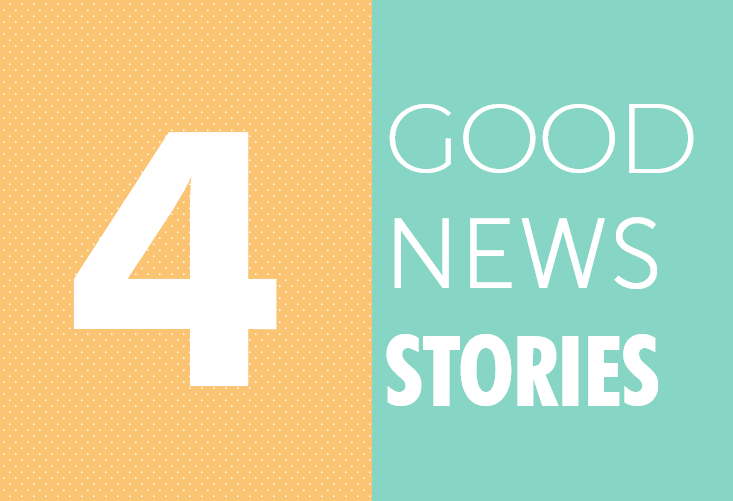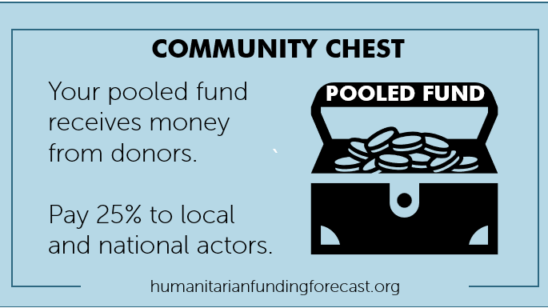
4 Good News Funding Stories6 min read
Good news can sometimes be hard to find – especially on this website. The number of people in need is accelerating, as is the funding required to meet those needs. Funding isn’t keeping up, and the big picture seems to be relentlessly depressing.
However, if we look in some of the corners of the funding picture we can see some pieces of ‘good news’. These rays of sunshine are not insignificant, and often can only be seen when we take a longer-term view of the funding landscape. The four stories presented here are just a selection of the good news out there. We’ll endeavour to bring you more of these on the website in the future.
Good news story #1: The humanitarian ‘industry’ has grown a lot faster than the global economy
Whether you look at all humanitarian funding, or just funding to response plans, funding has increased by a huge amount in the last 9 years. The global economy grew in the past 9 years, but not by anywhere near the speed of the humanitarian sphere.
The graph below fixes the value for these three things (all funding, response plan funding, and the global economy) at 100 in the year 2012. This allows us to compare how they have changed over time. Assuming this base value of 100, the global economy grew to a value of 119 over the period, whilst all humanitarian funding grew to 213, and response plan funding grew to 331.
The graph shows us the tremendous growth rate of humanitarian funding vs. a slower growth rate for the global economy. As the years pass, the global pie is getting bigger, and the humanitarian world is getting a larger piece of that bigger pie.
What this of course does not show is how humanitarian needs have accelerated over the past 9 years. If we had fixed the funding required for humanitarian activities in 2012 at 100, the funding required would have hit 418 by 2020 (to see this on the chart, just click on ‘Humanitarian: Funding Required’ in the legend). So of course as with all these four stories, there is good news. Yet the wider context often pushes us to be more sober about our analysis.
Good news story #2: Some donors have increased their commitments by huge amounts
The patchwork of graphs below shows ten donors who have substantially increased their humanitarian funding since 2011 (up to 2020). Each graph has its own scale, and we’ve ordered them by funding amount, with the US government in the top left ($9bn in 2020) and the Austrian government in the bottom right ($46m in 2020).
Put bluntly, the increase in donor funding over the ten-year period starting in 2011 is definitely a good news story. Many of the big donors increased funding substantially (e.g. the US government from $3bn to $9bn, and the German government from $0.5bn to $4bn).
One of the stories not often told, however, is that of smaller donors who have increased funding quite substantially in percentage terms over the ten year period. Italy, Ireland, Korea, and Austria all increased their humanitarian funding. Increases in humanitarian funding are good news, but so is increasing the diversity of the funding mix from different donors. Why? In the long run it will contribute to reducing reliance on the ‘big’ donors and thus increase resilience in the funding system.
However, the trend might not always be upwards. The dips in funding from the UK and Saudi Arabia are illustrative of this.
Good news story #3: Less earmarking by more donors
Back in 2016, donors and humanitarian organisations came together to “get more means into the hands of people in need and to improve the effectiveness and efficiency of the humanitarian action“. Part of this was ensuring more ‘quality funding’.
Okay, so what does that actually mean? Part of it is reducing the ‘earmarking’ of donor contributions (earmarking meaning whether funding is tied to a project, geography, thematic or donor priority). Why is this important? Because more flexible funding ensures funding is less determined by a set of priorities decided ‘on-high’, and is more determined by the needs and priorities of the affected population and gets there quicker. The target was that for donors at least 30% of their contributions are ‘non-earmarked’ or ‘softly-earmarked’.
Last year’s Grand Bargain Annual Independent Report (AIR) showed that 17 donors reached the 30% target (and these in total accounted for 36% of total humanitarian funding in 2020). This includes some big donors, such as the German and British Governments.
The good news story isn’t just that 17 donors had reached this target in 2020, it is that the direction of travel is also clear – compare this to the fact that only one donor was reported to have met the target in 2016 (Norway).
However, we should point out that the US and ECHO (two of the largest donors) have yet to meet the 30% target. Furthermore, as the 2021 AIR notes, earmarking has not increased as a percentage of overall funding but only in the dollar value.
Good news story #4: More reported funding for Child Protection, Education, Gender Based Violence, and Nutrition
These four sectors have had some of the highest growth rates across all sectors over the past five years. In 2016, the combined funding of these four sectors was $604m. In 2021, this figure was $1.9bn.
Child Protection (CP) and Gender Based Violence (GBV), partly due to increased visibility in the system, have increased their funding by huge amounts compared to 2016.
Education and Nutrition have also increased funding across the five year period, and unlike CP and GBV who are both seeing increases in visibility as they step out of the shadow of ‘Protection’, no such situation exists with Education and Nutrition.
We could have chosen other sectors here as well, such as Food Security ($2.8bn to $5.4bn) and Health ($796m to $1040m), but the four sectors above were chosen because their “equilibrium” had shifted significantly across the period (see methodology for more details).
Yet, like all these stories, there is one final ‘but’. Across the same period, the funding required has increased a substantial amount. Whilst CP and GBV weren’t reporting requirements in 2016, their funding gaps were substantial in 2021, as were those of Education and Nutrition.
Methodology and Sources
Story #1: All humanitarian funding and funding required data is from FTS, and was extracted on 28th January 2022. Global GDP data is taken from the World Bank’s DataBank and was also extracted on 28th January 2022. The Global GDP figure uses a constant 2015 US$ figure.
Story #2: The data of the top 25 donors was extracted from FTS on 30th January 2022. This includes all humanitarian funding (not just funding to response plans). The donors above were chosen as they reached a higher ‘equilibrium’ over time. We judged this by looking at both a) whether the rolling three-year average of funding between 2011-2013 was at least 40% higher than the rolling three-year average between 2018-2020, and b) whether the 2020 figure was at least 40% higher than the 2011 figure. For the record, this 40% figure is totally arbitrary – but we have to draw the line somewhere. We then excluded Colombia due to the low-levels of funding, and the UAE due to the recent trend of a huge decline in funding.
Story #3: Data is based on a data review of all Grand Bargain Annual Independent Reports: 2017, 2018, 2019, 2020, and 2021. Eagle-eyed readers will notice a slight discrepancy between the report period (2017-21) and the data period (2016-20). This is because the reports focus on the data from the previous year, hence a lagging data period.
Story #4: Data taken from FTS and extracted on 7th January for 2021 data, and 9th January for 2016-2020 data. This data represents funding for response plans only. For more on individual sectors, please check out our Sector pages.


